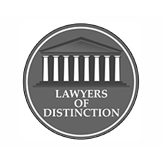Pedestrian accidents are rising across California, and two of the most common contributing factors are speeding and distracted driving. When drivers fail to slow down or take their eyes off the road—even for a few seconds—the consequences can be catastrophic. California law holds drivers to a high standard of care, especially in areas with heavy foot traffic. If a pedestrian is injured due to a speeding or distracted driver, liability often falls squarely on the motorist. This article explores how these behaviors increase legal responsibility, what evidence strengthens a claim, and how victims can pursue compensation.
Why Speeding and Distraction Are So Dangerous for Pedestrians
Pedestrians are vulnerable road users with no physical protection. When drivers speed or become distracted, they reduce their ability to:
- React quickly to unexpected movements
- See pedestrians in crosswalks or near intersections
- Stop in time to avoid a collision
- Make safe decisions in congested or school zones
According to the California Office of Traffic Safety, nearly 900 pedestrians were killed in a single year, with thousands more seriously injured. Many of these incidents involved drivers who were texting, adjusting GPS, or traveling above the posted speed limit.
California Laws on Speeding and Distracted Driving
California law is clear: drivers must operate their vehicles with reasonable care and obey all traffic regulations. Key statutes include:
- California Vehicle Code § 22350: Prohibits driving at speeds that are unsafe for current conditions
- California Vehicle Code § 23123.5: Bans texting or using handheld devices while driving
- California Vehicle Code § 21950: Requires drivers to yield to pedestrians in crosswalks
Violating these laws not only results in fines and points on a license—it also establishes negligence in a civil lawsuit.
How Speeding Increases Liability
Speeding reduces a driver’s ability to stop in time and increases the force of impact. In pedestrian accident cases, speeding often leads to:
- Presumption of negligence if the driver violated posted limits
- Higher damages due to the severity of injuries
- Punitive damages in cases of reckless or excessive speeding
Courts may also consider whether the driver was speeding in a school zone, residential area, or near a marked crosswalk, which increases the duty of care.
How Distracted Driving Increases Liability
Distracted driving includes texting, talking on the phone, eating, or adjusting in-car systems. In California, proving distraction can significantly impact a pedestrian accident claim:
- Cell phone records may show texting or calls at the time of the crash
- Surveillance footage can reveal driver behavior
- Eyewitness statements may confirm inattention
- Police reports often cite distraction as a contributing factor
If distraction is proven, the driver’s percentage of fault increases, which boosts the pedestrian’s compensation under California’s comparative fault system.
Comparative Fault in California
California follows a pure comparative negligence rule. This means:
- Both parties can share fault
- The pedestrian’s compensation is reduced by their percentage of fault
- Even if the pedestrian was partially responsible (e.g., jaywalking), they can still recover damages
However, if the driver was speeding or distracted, their share of fault typically outweighs the pedestrian’s—especially if the pedestrian was in a crosswalk or obeying traffic signals.
Real-Life Example
A pedestrian in Fresno was struck while crossing at a marked crosswalk. The driver was texting and failed to slow down despite flashing school zone lights. The victim suffered a broken leg and head trauma. Cell phone records and surveillance footage confirmed distraction. The case settled for $850,000, covering medical bills, lost wages, and pain and suffering.
Evidence That Strengthens a Claim
To build a strong pedestrian accident case involving speeding or distraction, victims should gather:
- Photos of the scene, including skid marks and signage
- Police reports citing speeding or distraction
- Witness statements from bystanders or passengers
- Traffic camera or dashcam footage
- Medical records documenting injuries
- Cell phone records (subpoenaed by your attorney)
This evidence helps establish negligence and maximize compensation.
What to Do After a Pedestrian Accident
If you’re hit by a speeding or distracted driver:
- Seek medical attention immediately
- Call the police and file a report
- Document the scene with photos and notes
- Collect contact information from witnesses
- Avoid speaking to insurance adjusters without legal advice
- Consult a California personal injury attorney experienced in pedestrian accidents
Acting quickly preserves evidence and strengthens your legal position.
Final Thoughts
Speeding and distracted driving are two of the most dangerous behaviors on California roads—and when they result in pedestrian injuries, the law is on the victim’s side. By understanding how these actions increase liability, gathering strong evidence, and working with a skilled California pedestrian accident attorney, injured pedestrians can pursue justice and secure the compensation they deserve.
References
- Farahi Law Firm. (2025). How Distracted Driving Affects Pedestrian Accident Claims
- Avrek Law Firm. (2025). Understanding Pedestrian Rights in California
- Michael Waks Law. (2023). Exploring the Legal Rights of Pedestrians in California
- Bana Law. (2025). Why Distracted Pedestrian Accidents Are Increasing
- Larry H. Parker Law. (2021). Distracted Driving and Pedestrian Accidents





